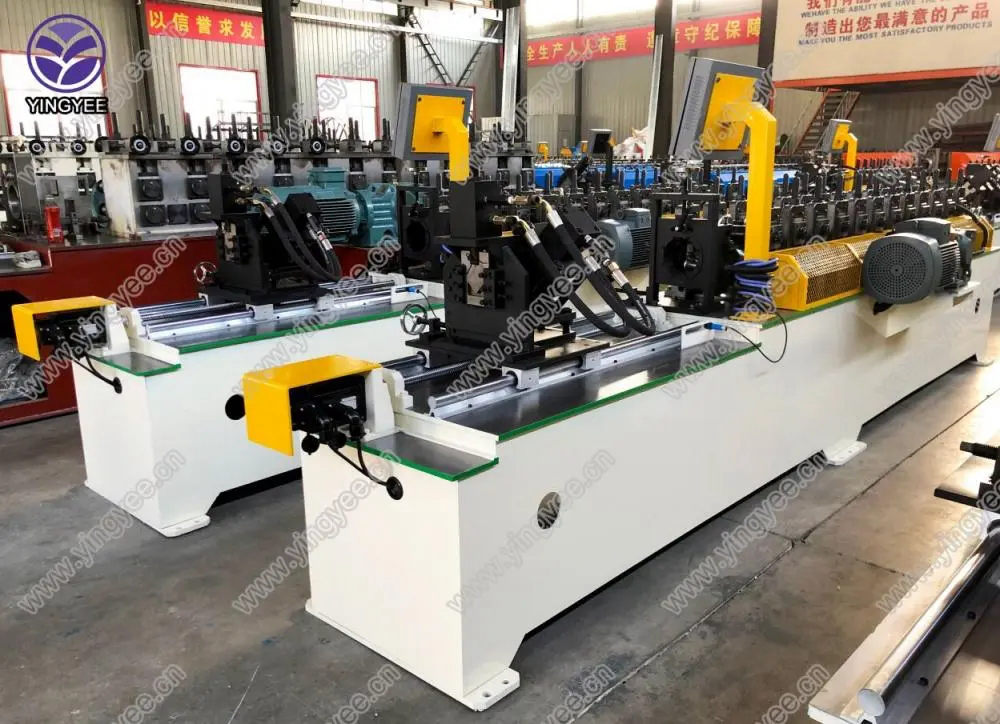
The Production of Carbon Steel Square Pipe Making Machines
Carbon steel square pipe making machines have become essential tools in the manufacturing industry, especially in the construction and structural sectors. These machines are designed to produce square pipes from carbon steel, which is renowned for its strength, durability, and versatility. This article delves into the significance, operation, and advantages of carbon steel square pipe making machines.
Understanding Carbon Steel
Carbon steel, an alloy primarily composed of iron and carbon, offers a range of properties that make it suitable for various applications. Its varying carbon content allows manufacturers to control hardness, ductility, and tensile strength, making it a preferred material in pipe production. Carbon steel pipes are widely used in construction, plumbing, and infrastructure projects due to their resilience and cost-effectiveness.
The Importance of Square Pipes
Square pipes are crucial in numerous applications, including furniture manufacturing, automotive parts, and structural applications. The uniform shape allows for easy stacking, fitting, and welding, making them a favorite among fabricators. Additionally, the aesthetic appeal of square pipes makes them a popular choice for visible structural elements in buildings.
Working Principle of Square Pipe Making Machines
The production process of carbon steel square pipes involves several key steps, primarily rolling, welding, and cutting. The square pipe making machine typically starts with flat steel strips. These strips are fed into a series of rollers that form them into a square cross-section.
1. Forming Process The flat sheets pass through a series of rollers designed to bend the steel gradually. Each roller adjusts the angle slightly, guiding the steel strip into the desired square shape.
2. Welding Process Once the strips are shaped into a square, they are then welded along the seams using high-frequency electric resistance welding (ERW). This process creates a robust bond, ensuring that the square pipe can withstand various stresses.

3. Cutting Process After welding, the newly formed square pipes are cut to the required lengths. The cutting mechanism can be adjusted to produce pipes of different sizes, catering to the varied needs of customers.
Advantages of Utilizing Carbon Steel Square Pipe Making Machines
There are numerous benefits to using these specialized machines in pipe production
1. Efficiency The advanced technology in modern machines allows for high-speed production, resulting in shorter lead times and increased output levels. This efficiency helps manufacturers meet market demands quickly.
2. Precision Automated systems ensure uniformity and accuracy in the square pipes produced. This precision is crucial for applications where measurements can greatly affect the performance and compatibility of structural components.
3. Cost-Effectiveness By utilizing carbon steel and modern manufacturing techniques, producers can create high-quality square pipes at a lower cost compared to other materials, making them cost-effective for large-scale projects.
4. Versatility These machines can produce square pipes of various sizes and thicknesses. This versatility allows manufacturers to cater to a broad spectrum of industries and applications.
5. Quality Control Advanced machines come equipped with sophisticated monitoring systems that ensure the quality of the finished products. Continuous checks during the production process help identify and rectify defects early, ensuring high-quality output.
Conclusion
Carbon steel square pipe making machines play a pivotal role in modern manufacturing. Their ability to produce strong, durable, and precise pipes aligns with the growing demand across various industries. As technology advances, these machines are becoming even more efficient and versatile, further solidifying their importance in the manufacturing landscape. With their integration, industries can benefit from enhanced productivity, reduced costs, and improved product quality, paving the way for innovative applications and structural advancements in the future.